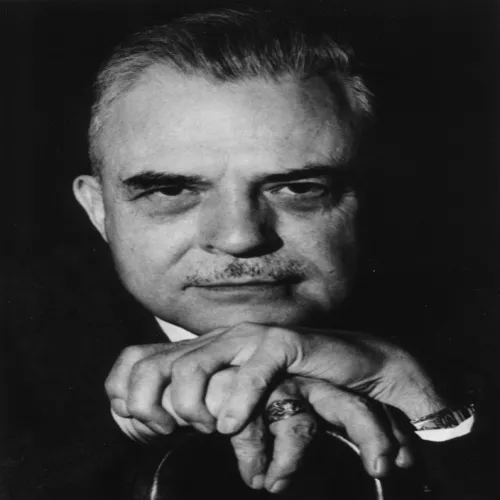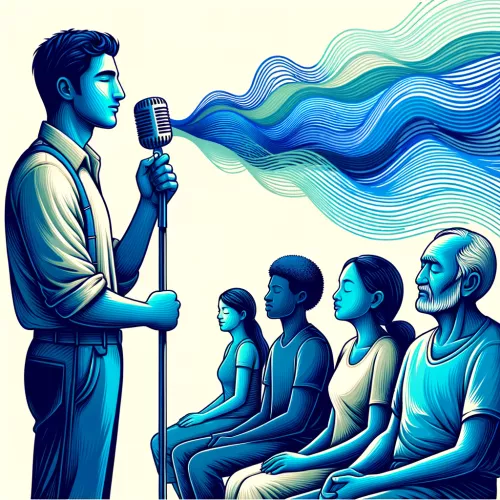
Get Full Covert Hypnosis Course
How To Hypnotize Someone
Learning how to hypnotize someone is in fact quite easy, provided a little effort is invested into learning how to do so. It's not something that can be learnt in an hour or two however, so if you're serious about actually doing it, bookmark this page and be prepared to go over it for the next few days.
Let me get something out of the way - If you google 'how to hypnotize someone', a lot of quick guides with pretty pictures will pop up, that are optimized for search engines and casual readers with about 5 minutes to spare. Go ahead and try them. They won't work, but they may entertain you for a brief period of time. If they do work, your volunteer is probably just playing along. If that's all you want, then skip this article and website, as it's not what you're looking for.
If however you're serious about learning how to hypnotize someone, as opposed to being merely entertained or having a bit of fun, a genuine effort will be required on your part, including learning a bit of history surrounding hypnosis, and why it works, before we move into its practical applications.
Understanding the 'why' is very often critical to understanding the 'how' in many fields - hypnosis is no exception. I can promise you one thing however: the time investment you make here, right now, will be worth it, even if at times it doesn't feel exciting. When the fruits of your effort finally pay off, they will pay off.
One last thing I will add before we begin. Hypnotizing someone is a foundational building block to learning covert hypnosis, which is an advanced form of hypnosis aimed at hypnotizing people outside their conscious awareness. In this in-depth article, I will be relaying to you the exact steps needed to hypnotize someone voluntarily. It's essential you not only grasp, but master these foundations before progressing on to my covert hypnosis article, if that's the direction you eventually wish to go.
If you only wish to hypnotize people voluntarily (with their permission), then this article is all you will ever need to read. If you intend to hypnotize people covertly however (outside their awareness), then that is a far broader and more in-depth topic that I'm also happy to teach you, but it won't be covered in this article. Nevertheless, this article still serves as a pre-requisite to the topic of covert hypnosis, so you will need to read it anyway regardless of what your goals in hypnosis are.
Remember this as you proceed: There are no shortcuts. I cannot emphasize this enough. Being entertained, and learning how to hypnotize people, are two different things entirely. If it's entertainment you're after, this guide will be a waste of your time. This guide is lengthy, and at times it will be boring. It will also require you to do real life practical exercises, which you may fail at initially before succeeding. Genuine effort will be required on your part. This is because hypnosis has a lot of building blocks that must be mastered in order for you to be an effective hypnotist.
For a full course on hypnotizing people, both with and without their knowledge, I recommend my full course,
The Art Of Covert Hypnosis.
Otherwise, enjoy this article.
Steven Peliari
Master Hypnotist
Contents
Foundational Topics
Hetero Hypnosis In-Depth
Hypnotic Tonality
What Is Hypnosis?
A Historical Art, A Recent Science
Hypnosis, an art that has been used for many years to help people in a variety of ways, has only recently begun to be recognised as a valid field of scientific enquiry. Before anti-pain drugs were invented, hypnosis was commonly used by physicians and other professionals as a means of preventing and managing pain1.
Those that were wounded or were undergoing surgery would often enter into a state of hypnosis, through the guidance of a trained hypnotist, so as to alleviate their symptoms and pain.
Since the invention of pain relief drugs, hypnosis has quietly subsided from mainstream knowledge and public awareness. Most people know hypnosis only through stage shows, and most people haven't even witnessed a professional hypnotist in action, at least, not knowingly.

A hypnotist hypnotizing a patient, who is in a deep trance.
Throughout the ages a number of groups and individuals studied hypnosis extensively, and mastered and refined its many principles. They took hypnosis outside of clinical practice and were able to apply it to every day life, through the use of conversation, body language, even through television and radio.
Over time, and thanks primarily to the contributions of Dr. Milton Erickson, hypnosis was expanded upon and refined in many ways, and has even been found scientifically useful in clinical practice2.
There was discovered a way to seduce a person's subconscious mind and plant suggestions within it, causing the person to behave in just about any manner the hypnotist pleased, all without the person even being aware that such a thing was going on.
Its History
In order to understand hypnosis, we first need to look into the history of it. Hypnosis itself has been around since the existence of mankind, it just hasn't been interpreted and defined until recently.
Anton Mesmer is generally credited as being the first person to recognise the effects of hypnosis, however he believed these effects were due to what was known as animal magnetism, which was the use of magnets passing through various parts of the body in order to heal it3.

Anton Mesmer using magnets for healing in an 18th-century setting, showcasing the early practice of hypnosis and animal magnetism.
Whilst animal magnetism did seem to have a healing effect, it was later discovered that the effects were not due to magnets at all, but rather due to hypnosis.
It was James Braid4 that developed the field of hypnosis, and coined the term as such. He found that hypnosis resulted in prolonged eye fixation to an object of some form, which is possibly what led to the popular notion of a hypnotist using a swaying watch in order to hypnotize his or her patients.
Braid's discoveries led to the development and improvement of hypnosis, eventually helping physicians to develop ways to treat patients and amputees with minimal pain through the use of hypnosis.

An original portrait of James Braid.
A number of researchers, psychologists and physicians made contributions to hypnosis over time, however it wasn't until the time of Dr. Milton Erickson in the 1970-1980's that hypnosis really took on its modern form. Erickson separated the states of the conscious and subconscious mind and was famous for being able to establish rapport with his clients through just about any means possible.
He believed that by establishing some form of familiarity with a subject, that work could be undertaken on the unconscious mind of the subject, and positive changes made.5
Erickson's finding contributed heavily to the development of the field of NLP, and his techniques are frequently taught and applied in just about all forms of modern hypnosis.

Dr. Milton Erickson - Original photograph.
The Applications of Hypnosis
Now that you have an understanding of a little of the history behind hypnosis, we can delve into some of its practical uses.
Hypnosis is used by people every day of the week to help treat a number of addictions, phobias, anxiety, depression and other psychological ailments. Just about anything where the mind is concerned, hypnosis can intervene in some way.
Now hypnosis can be applied in one of two ways, it can be applied through the use of autosuggestion, which is commonly known as 'self hypnosis' or it can be applied in an interpersonal setting, which is known as 'hetero hypnosis'.
Self hypnosis involves repeating messages to oneself whilst in a deeply relaxed state, causing the messages to eventually seep into the subconscious mind and affect the behaviour and thought patterns of the individual.
Hetero hypnosis typically takes place when another person hypnotizes you and guides you into a relaxed state. This can take place through either the guidance of a hypnotherapist, or through a hypnotist such as is seen at a stage hypnosis show.
Covert hypnosis is a very advanced form of hetero hypnosis, however before we get into it there are a number of other topics in hypnosis that we must first cover.
Foundations
Theory Of Mind
The Conscious & Subconscious
The mind can be thought of as being divided into two distinct parts. The conscious mind and the subconscious mind.
The conscious mind holds all of the thoughts that we're currently aware of, as well as what we determine to be reality. You realising that you're reading this article right now is governed by your conscious mind.
Beneath the conscious lies the subconscious. Once upon a time you did not understand the meaning of words, and you needed to associate certain objects, emotions and feelings to words in order to make sense of them. Over time however, the meaning of these words became second nature to you. You no longer required any conscious effort in order to determine the meaning of the words you learned.
This is because your subconscious now determines the meaning of words, as opposed to your conscious.

Illustration of the mind's division into the bustling, aware conscious and the deep, serene subconscious, highlighting the seamless yet profound distinction in human cognition.
If you repeat a word or thought in your mind often enough, it will eventually become stored in your subconscious, and you won't need any conscious thought in order to determine its meaning.
The same can be said for learned behaviours such as riding a bike, driving a car, writing, speaking, playing sports. Any task that you can learn will eventually become stored in your subconscious with enough practice, allowing it to become second nature.
There are other types of thoughts that your subconscious stores however. Experiences, emotions and even your personality are stored within your subconscious. Negative emotions and experiences can shape your personality just as much as positive emotions and experiences can.
Those who have had many negative experiences will be more likely to become pessimistic and expect bad things to happen to them in the future, whilst those who have had more positive experiences will generally be optimistic.
Now the thing with our subconscious, is that we don't know what thoughts are stored within it, or how those thoughts are affecting our conscious thoughts and behaviour. The moment we become aware of a subconscious thought, it becomes a conscious thought, and thus it's no longer a subconscious thought at all. Some of these thoughts that randomly come into our conscious from time to time may however give indications of the sort of information that is stored in our subconscious.
So to summarise: The conscious mind is what stores all the thought's that we're currently thinking of, and is what makes us aware of our surroundings. The subconscious mind is what stores the thoughts we're not aware of, such as our learned behaviours, emotions and experiences.
Whilst we may retrieve thoughts from our subconscious, there is no way of knowing all the thoughts that are stored within it, or how they may affect our conscious thinking.
It's very important you understand the difference between the conscious and subconscious, as now we're going to be discussing what's known as the 'critical mind'. If you need to re-read over the above section, then feel free to do so before continuing.
The Critical Mind
For thoughts to be stored in our subconscious, they must first pass through our conscious. Separating the conscious mind and the subconscious mind is what's known as the 'critical mind'.
The critical mind can be best thought of as an imaginary layer of our mind that separates conscious thoughts from entering into our subconscious. Think of it as the guardian at the gate of the conscious and subconscious mind. It examines the conscious thoughts that are attempting to pass through the gate and determines whether or not they're suitable for entering into our subconscious.
It's what safeguards our subconscious against unwanted external suggestion. If we did not have our critical mind, then we would do almost anything that anyone told us to do, even complete strangers.

Our subconscious is vast, but is guarded by the 'critical mind'.
Now the critical mind does not determine whether something should pass into our subconscious based upon whether it's a positive or negative thought. It instead uses our subconscious morals and beliefs to determine whether or not we should accept the thought or suggestion into our subconscious. It's very important you understand this.
Since our morals and beliefs are stored at a subconscious level, it can be hard to tell what sort of thoughts our subconscious will accept, and what sort of thoughts it will reject. If you believe that watching horror films is entertaining, then the subconscious will allow horrific, negative images to seep into it, since such images form part of your belief.
If someone is very negative and twisted, the subconscious may even reject positive thoughts, since the thoughts won't form a part of the person's fundamental morals and beliefs.
So to iterate – the critical mind accepts or rejects thoughts based upon our morals and beliefs, not whether the thought is good or bad.
Now in hypnosis, when we have a thought that we act upon in some way, it's known as a 'suggestion'. An example of a suggestion would be someone telling you "Go down to the shop and buy a litre of milk". This suggestion would be analysed by your critical mind in order to determine whether or not you should act upon it.
Your critical mind may think "I don't feel like buying a litre of milk, but I respect the person that is telling me to go and buy it, and I respect our relationship, so I will go down the road and buy the litre of milk anyway". This is an example of the critical mind accepting the suggestion.
On the other hand, your critical mind may think "I don't feel like buying a litre of milk, and I don't appreciate that this person told me to buy the litre of milk. It goes against my belief that I'm in control, so I'm not going to go down the road", in this case the critical mind would have rejected the suggestion given.
As you can see, the critical mind either accepts or rejects suggestions. Remember, the critical mind determines whether or not a thought or suggestion is accepted or rejected based upon your morals and beliefs.
Now you may hold one person in higher regard than another person, and therefore reject the suggestion that one person gives you, but act upon the exact same suggestion if another person gave it to you.
An example would be if you were walking down the road and a stranger approached you. The stranger said "Hey, can I borrow $100? I really need it for a new television set". You would most likely reject the suggestion as you don't hold the stranger in high regard, unless of course you were feeling extra charitable.
Now if on the other hand a close friend or family member asked the same question, there'd be a much greater chance that you'd accept their suggestion, and lend them the $100.
Once again, your critical mind acted upon the belief that you cared about your friend or family member more than the stranger.

People are likely to ignore one person, whilst listening to another, even if both are asking the same thing.
Now in hypnosis, a person may act upon suggestions that they normally wouldn't. At stage hypnosis shows, some people will seemingly have no control over the way they behave. This is because a trained hypnotist knows how to bypass the critical mind.
Bypassing The Critical Mind
When someone is in a heavily relaxed state, their mind is generally very relaxed. Think of a depressant such as alcohol. When someone drinks a large amount of alcohol, their brain enters into a relaxed, less functional state. This means that as thinking becomes distorted, so too does the critical mind.
If you go to a nightclub where everyone has been drinking heavily, people will be more open to randomly kissing or making out with complete strangers, to commit acts that they wouldn't normally do if they were sober. Alcohol slows the functioning of the brain, the critical mind included. If the critical mind enters into a depressed state, it is not able to analyse external thoughts or suggestions as well as it normally can.
Now imagine someone meditating. They too will be in a heavily relaxed state. The subconscious mind of the person will be more vulnerable to external thought and suggestion as the critical mind will be relaxed.
When we guide someone into a state of hypnosis (known as a 'trance'), their brain becomes heavily relaxed as well. The deeper we guide the person into hypnosis, the more relaxed their brain becomes.
Now, the deeper this relaxed state is, the more relaxed the person's critical mind will be. If the critical mind is heavily relaxed, then it will not be able to function as the gatekeeper between the conscious and subconscious mind as well as it could if it was alert.
When someone has a relaxed critical mind, we can start to plant suggestions within them that they'd normally reject. The more relaxed the person's mind is, the more likely they will be to accept these suggestions.

A hypnotherapist bypassing someone's critical mind, their suggestions passing the gate into the subconscious.
If a hypnotherapist is treating a patient, the first thing they will do is place the patient in hypnosis. The patient will become more and more vulnerable to suggestion the deeper they fall into hypnosis.
When the patient is in a relaxed enough state, the hypnotherapist will give a suggestion such as "you will feel your right hand slowly begin to raise itself". Since the critical mind of the patient will be heavily relaxed, the patient will likely act upon this suggestion, without them even being aware that they're doing so.
Now it's important to understand what's going on through the patient's mind when this is happening. The patient is not thinking "Oh no, my arm is raising and I can't stop it". The patient is instead more likely to be oblivious to the fact that their arm is raising. This is because their critical mind isn't doing much thinking.
The moment the critical mind realises that the arm is raising, it can immediately stop it from doing so. The trick with hypnosis is to operate outside of the critical mind's awareness, and this becomes possible by relaxing the critical mind so that it's not as actively aware as to what is happening.

Someone raising their hand outside of their conscious awareness, due to hypnotic suggestion.
So just how does the critical mind become 'relaxed' in hypnosis? It's through a process known as an overload of message units.
Message Units
Before continuing, we should first define what a message unit is. A message unit is basically any form of communication that your conscious mind makes with your subconscious mind. If a person says to you "how are you today?" then they're sending a number of message units from your conscious into your subconscious. Your subconscious must determine what the phrase "how are you today?" means. It must then think of a possible response and send it to your conscious.
Message units don't have to be words. Merely looking at an object and determining what colour it is serves as a type of message unit.
A message unit can be just about anything that causes the critical mind to analyse some form of information. It can be an external, environmental thing, or something as simple as an internal thought.
The brain is used to handling a set amount of message units at any given time. If these message units ever exceed a certain threshold however, then the brain will become confused. This state of confusion temporarily dips into what's known as a 'trance'.

When the mind receives too many message units at once, it becomes overwhelmed and a state of trance results.
Trance is the state that a person enters into when their critical mind is relaxed, and their subconscious becomes more vulnerable to suggestion. Message units that flow into a person's subconscious when they are in a trance are less likely to be rejected.
The process of sending an excess amount of message units into a person's mind, and thereby causing the person to enter into a state of trance, is a process known as an overload of message units.
Here's another way of explaining it: Imagine a person's mind having a set frequency. Whenever the mind analyses something, it causes the frequency to go a little higher. Now imagine if the mind was forced to analyse an incredibly large amount of information within a short period of time. This would cause the frequency to suddenly peak very highly.
If the frequency goes too high too quickly, then the brain will become "overloaded" and enter into a state of confusion. This causes the frequency to temporarily dip to a lower state than it normally exhibits, before gradually returning to its normal state. This can be demonstrated in the following diagram –

As you can see, the brain is maintaining a normal frequency to begin with. As it receives message units, its frequency is raised. When it receives too many message units, it will dip to a lower state than the normal frequency. This lower state is known as a 'trance'. The trance will gradually return to a normal frequency if it is not maintained.
As you progress with your studies in hypnosis, you will learn how to apply more and more message units in order to cause a person to enter into a deeper and deeper trance, not allowing them to return to a normal frequency until you allow them to. This will be explained later.
So just how do you overload someone with message units? Quite simply, you cause confusion within the person. Confusion will always result from an overload of message units.
Confusion doesn't have to be negative, confusion can be positive, just so long as it relaxes the mind by causing an overload of message units.
Let's say for example that someone was willing to be hypnotized. You asked the person to take a seat in a chair, and to move their arm in a certain position on the table. You asked them to adjust their chair a number of times.
You then explained to the person what hypnosis was, how it worked, and what they could expect with it. You also explained to them that they could alert you at any time if they wanted to be taken out of hypnosis.
By this stage the person has an expectation that they will be hypnotized. This expectation alone sends a tremendous amount of message units through their mind. You then asked the person to relax themselves, yet still remain alert.
You then begin by giving the person hypnotic suggestions. An example of a hypnotic suggestion would be "you may begin to feel your right hand raising itself, whilst your left hand has a tendency to sink deeper into the table". Such a suggestion would conflict with the mind's initial belief that the right hand was not raising at all, and an overload of message units would result.
We will now delve into the topic of suggestion, but before we do it's important you understand the key points about Theory of Mind:
- The mind is separated into the conscious and subconscious.
- Separating the conscious and the subconscious is the 'critical mind'.
- The critical mind determines what thoughts and suggestions enter into the subconscious.
- A message unit is a unit of information that the critical mind analyses.
- If an overload of message units occur, the mind becomes confused and enters into what's known as a 'trance'.
- We can use an overload of message units to subdue the critical mind, and thereby plant subconscious suggestions that would normally be rejected.
The above 6 points effectively explain what Hypnosis is.
Principles Of Suggestion
Suggestion is the method that we use to convey thoughts to a person that is in a hypnotic state (a trance).
The way we word a suggestion, how we are viewed by the person we are giving the suggestion to, and how relaxed their critical mind is, all determine whether or not a suggestion will be effective.
What we're trying to do with suggestion is cause some sort of confusion within the mind of the person we're trying to send into a trance. We want to cause this confusion in a relaxed state however. Remember that confusion is simply the result of an overload of message units.

Confusion can result from either a negative source, or a positive source.
Before we begin, it's important you learn about the use of power words and failure words. As you will see, the use of power words and failure words is crucial to suggestion, as they subconsciously suggest to a subject whether or not they will succeed or fail in what they're trying to do.
Power Words And Failure Words
A power word is a word that evokes success, doing and achieving. A failure word on the other hand is a word that evokes failure. A power word is a word such as 'Do', and a failure word is a word such as 'try'.
'Do' is a word that connotes success because it relates to 'doing'. If you want to 'do' something, then you will 'do' it, there's no trying involved, no maybes, only accomplishment.
'Try' is a word that connotes failure. As long as the word 'try' is associated with a task, then completing the task becomes extremely difficult, if not impossible. This is because there is no success in the word 'try'. As long as someone is 'trying' to do something, they're not actually 'doing' it.
Many years ago when I was a teenager, I used to practice a little bit of martial arts. There was one technique that involved punching through a block of wood that I just could not complete. It didn't matter how long I practiced, or how perfectly I refined the technique, my fist would not break through the block of wood.
Each time before I punched the block of wood, I would think about 'how hard I would try' to get it right that time. Thoughts such as 'what if my hand hurts' and 'what if I fail again' went through my head as well. Not surprisingly, I wasn't able to break the block of wood.
One day I woke up and was incredibly frustrated that I couldn't break this block of wood. It was all I was thinking about during my sleep.
After I got dressed, I walked up to the block of wood, and without even thinking about anything, broke it with one swift punch.

Easily punching through a block of wood by simply 'doing it', instead of 'trying to do it'.
The amazing thing was, was that this didn't feel like a hard punch either, but there was something inside me that had had enough of just 'trying' and that finally wanted to 'do'.
I broke another block of wood again after that, knowing that I could. The blocks of wood eventually became quite easy to break, and I found it odd that I had ever had any difficulty breaking them in the first place.
So what was the lesson I learned from this experience? As long as we try to do something, we won't succeed. When we 'know' we will do something, and the thought of failure doesn't even enter our mind, then we will do it.
You see, it may seem odd, but our subconscious associates words such as 'try' and 'do' with our physiological actions a lot more than you may think.
If I asked you to think of a watery lemon right now, full of sour juiciness, and asked you to just imagine biting into this bitter sourness, you may notice that you salivate a little.

Simply imagining biting into a sour, dripping lemon is enough to evoke a physiological response of salivation - an illusion our brain physically manifests.
This is because you have come to associate lemons with sourness, and thus a physiological process (the salivation) resulted. This was due purely to the thought processes that went on within your subconscious mind.
Likewise, if I asked you to 'try and do twenty pushups', you'd be aiming for those 20 pushups, 'trying' to get there, but failure would of course be a possibility. Whereas if I told you 'Do 20 pushups now', then you'd realise that you had no choice but to do the 20 pushups, because I haven't given you any option for failure.
Words such as 'try' and 'do' both have an effect on the chemicals our brain releases in determining whether or not we can or can't do something.
This is due to the word 'try' being conditioned over time to mean failure, and the word 'do' being conditioned to mean 'doing'.
It's important you understand both power words and failure words as they are both used heavily in suggestion. Let's examine some more power and failure words –
| Power Words | Failure Words |
|---|---|
| Do | Try |
| Will | Attempt |
| Can | Possibly |
| Able | Not Sure |
| Easy | Hard |
There are many power words. Quite simply, a power word is a doing word that isn't associated with any form of failure. A failure word on the other hand is a word that gives the possibility of failure.
Applying Power Words to Suggestion
One of the ways that we cause an overload of message units in a person is by dispelling their doubts that hypnosis works. We can do this by performing very subtle forms of suggestion when the person is in a deeply relaxed state, and their critical mind is more open to suggestions.
We can start with a typical arm raising induction. This may consist of giving the person suggestions that their arm is relaxed, warm and light. An example would be as follows:
"As you fall deeper into this relaxed state, you may begin to notice that your arm becomes lighter and lighter, as all the tension flows out from it, it becomes light, as light as a feather. And the more relaxed you feel your arm become, the more you may feel the arm having a tendency to just naturally drift upward".
This gives the subtle suggestion that the person's arm will begin raising itself. If the person is in a relaxed enough state, then sure enough, their arm will begin to gently raise.
The reason this phenomenon is observed is because the critical mind is relaxed and not able to effectively reject suggestions from entering the subconscious.
Once the person's subconscious receives the suggestion that their arm is "as light as a feather", then the person will act upon the suggestion and believe that their arm really is as light as a feather. Remember that our beliefs and morals are stored in our subconscious. If our subconscious believes our arm to be light, then our arm will be light.
The more message units that we send into a person's subconscious, the more we overload their critical mind, and the deeper into trance the person will fall. There is nothing dangerous about this, it just means the person will be less able to critically analyse suggestions whilst they're in this state.
This is effectively how we create an 'overload of message units'. We guide the person into a relaxed state, give them subtle suggestions, and when these subtle suggestions appear to work, we can start to plant less subtle, more direct suggestions.
To demonstrate in point form, the process works as follows:
- The person enters into a state of relaxation, causing their critical mind to also become relaxed.
- When in this state of relaxation, the hypnotist plants very subtle suggestions. An example may be the person feeling their arm 'become lighter and lighter'
- When the suggestions are observed to take effect (i.e., the arm begins to raise), the hypnotist may then work on more direct suggestions
Before we continue any further, we are going to cover the two suggestibility types that people fall under – Physical, and Emotional.
Physical And Emotional Suggestibility
The way people interpret and respond to suggestions depends upon their suggestibility type. There are two suggestibility types: physical and emotional. To begin with, let's examine the differences between the physical and emotional suggestible.
The physical suggestible is more likely to respond to direct suggestions. An example of a direct suggestion would be "You will now begin to feel your right arm become glued to the table. It feels as if there is a concrete slab on top of it as well, and no matter how hard you try, you just cannot lift your right arm up".

For a physical suggestible, if the brain truly believes it cannot lift up its arm because it's glued to the table, then it won't be able to.
The above suggestion directly tells the subconscious that the right arm is effectively sealed to the table. Also notice the use of the failure word 'try'. This implies that the person cannot lift their arm, since if they 'try', they will fail. 'Cannot' is a very direct word.
Now, the emotional suggestible is more likely to respond to indirect suggestions. An example of an indirect suggestion would be "as you feel yourself fall deeper into this relaxed state, you may also feel a tendency for your right arm to become heavier. With every breath you inhale, and then exhale, you may begin to feel yourself entering deeper and deeper into this relaxed state, and you may even feel a slight urge to try and lift your right arm up, but after realising you cannot, you may just allow yourself to fall deeply into this state of relaxation, without any resistance".
The above suggestion indirectly tells the subconscious that the right arm cannot be lifted up. We never made a direct statement saying that the right arm was glued to the table, instead we said that the more relaxed the person felt, the more they may feel a tendency for their right hand to become heavier.
We then said that the person may feel themselves become more relaxed with each breath they take. Since we've associated the state of relaxation with the right arm becoming heavier, we don't need to mention the right arm again, the emotional suggestible will automatically associate the two and their right arm will become heavier whenever we make the person more relaxed.
Also, with the emotional suggestible, we never want to be direct and use words such as 'will' or 'cannot'. This is because a word such as 'will' or 'cannot' is much too direct. We want to use indirect words instead, such as 'may', to give the emotional suggestible the illusion that they're in control.

An emotional suggestible needs indirect suggestion that they cannot lift their arm - such as it's more relaxing to not lift it.
The difference between the physical and emotional suggestible can perhaps be put down to control. A physical suggestible responds better if he or she is told to do a certain action, they almost want to relinquish their control to the hypnotist.
An emotional suggestible on the other hand wants to remain in control. They don't want to let the hypnotist maintain control over them, therefore we must use indirect suggestions so that they still feel like they're in control, even though they're not.
It's important you understand this crucial difference between physical and emotional suggestibles.
Determining Whether Someone Is Physical Or Emotional Suggestible
Everyone has signs of both emotional and physical suggestibility. What we need to do is determine whether the physical signs outweigh the emotional signs, or the emotional signs outweigh the physical signs. This will help us determine the person's suggestibility type.
In a clinical setting, we can ask the person a number of questions in order to ascertain what their suggestibility type is.
Now if you want to covertly hypnotize someone, then obviously you won't be able to do this and will have to pick up on other cues instead.
Being able to identify whether someone is a physical or emotional suggestible only from their body language and the way they speak will be discussed later in a more advanced section of my main course, as it's beyond the scope of this article. For now, it's important you know the two suggestibility typings exist, and you should have a basic idea on how to profile people into which typing they belong to.
It's essential you learn how standard forms of hypnosis work before progressing to more advanced forms such as covert hypnosis.
So what's important that you understand at this stage are the exact questions you need to ask someone to determine their suggestibility type. Obviously the person will need to volunteer for this.
What you're looking for in a physical suggestible is someone who is more extroverted in their communication with people, doesn't mind body touch and accepts things at face value. You're looking for someone who is more open with their ideas and often thinks aloud, in a group setting.
An emotional suggestible on the other hand may appear more introverted initially. They may heavily engage in discussion with someone they get on well with, however may not be willing to reach such a deep level with people they don't trust, such as strangers. They may be more resistant to touch and don't respond as well to directness. This is the sort of person that visualises their ideas and does a lot of thinking and reflection.
So imagine a clinical setting where you're asking the person a number of questions. The questions you will need to ask will consist of things such as the following —
"Are you able to visualise images with your eyes closed"?
If the answer is yes, then give the person a point towards emotional suggestibility.
Some people tend to visualise thoughts and experiences in their mind, whilst others will imagine sound and touch alone. The visualisation of thoughts is more of an emotional signal than a physical one.
"Have you ever walked in your sleep before?"
If yes, give a point to physical suggestibility, if no, then emotional.
"Do you feel people you've just met are critical of your appearance?"
If yes, give a point to emotional suggestibility, if no, then physical.
"Do you feel comfortable showing affection for someone you are in a relationship with in public?"
If yes, then give a point to physical suggestibility, if no, then emotional.
"In a conversation, do you sometimes not pay attention to what the other person is saying because you are too keen to say what you want to say?"
If yes, then give a point to physical suggestibility, if no, then emotional.
"In a group setting with people that you just met, would you feel comfortable being the focus of attention?"
If yes, then give a point to physical suggestibility, if no, then emotional.
"Do you learn better by experiencing things than by reading about them?"
If yes, then give a point to physical suggestibility, if no, then emotional.
"In a class or lecture, would you feel comfortable asking questions in front of a large group?"
If yes, then give a point to physical suggestibility, if no, then emotional.
"Do you enjoy speaking with children?"
If yes, then give a point to physical suggestibility, if no, then emotional.
"Have you ever awakened in the night and felt your body unable to move, even though you were awake?"
If yes, then give a point to emotional suggestibility, if no, then physical.
The above ten questions should give you a rough indication of just how physically suggestible or emotionally suggestible a person is.
The Somnambulist
(note: in hypnosis, this term does not refer to a sleep walker)
A somnambulist is someone who is equally physically and emotionally suggestible. In terms of using suggestion, both direct and indirect suggestions work with somnambulists. This means that you don't need to worry about how you shape your suggestions with a somnambulist, as they are naturally suggestible to just about any form of suggestion.
Somnambulists also exhibit a tendency to fall into a trance state quite easily. Somnambulists are the easiest type of person to hypnotize, and are generally highly suggestible people, even when not in hypnosis.
This concludes the introduction to suggestibility. I realise that I went quite in-depth, and some of the concepts may seem a little difficult to grasp initially. I recommend you re-read the above topic until it makes sense to you before moving on, as you will be building upon this knowledge as we progress.
Next, we will examine the state that a person enters when they're in hypnosis. This state is known as a 'trance'.
Trance States
A trance is best thought of as an altered state of consciousness. When you are waking up, falling asleep, dreaming, feeling euphoric, your brain is operating at varying frequencies and releasing different chemicals.
These frequencies the brain is operating at can cause different physiological feelings of tiredness, relaxation, or alertness.
To best understand how the brain behaves when it's in a hypnotic trance, we need to first define the various frequencies the brain operates in.
Brain Waves
Brain waves are basically our brains way of communicating. Whenever our brain passes information, it does so with a certain frequency through the waves that it sends out. In physics we know that a wave can be altered by differing frequencies and amplitude. This same concept is applied to brain waves.

The brain operates at different brainwave frequencies, each invoking their own differing states of consciousness & awareness.
The differing brain wave frequencies and their associated states of consciousness are explained below:
Gamma Waves –
Gamma brain waves have a frequency of approximately 40 Hz. This high level of frequency is exhibited when the brain is in a very high state of mental activity and thinking. It's rare to be in this state for prolonged periods.
Beta Waves –
Beta brain waves have a frequency between 13-30 Hz. This state of consciousness is mostly associated with intense concentration, deep analytical thinking and problem solving. It's a common state to be in when studying, learning a new task or analysing a certain situation.
Alpha Waves –
Alpha brain waves have a frequency somewhere between 8-13 Hz. These waves are exhibited when someone is in a calm yet still alert state of mind. This state is most commonly associated with relaxation, gentle thinking and being care free. This is a healthy state to be in as the mind is not doing any thinking that is too strenuous.
Theta Waves –
Theta brain waves have a frequency somewhere between 4-7 Hz. A theta state is generally associated with being heavily relaxed, daydreaming and even unconscious. The deep level of subconscious awareness that is exhibited in the theta state makes it the perfect state to plant suggestion. This is the desired state that we wish to send people into in hypnosis, and is what we roughly refer to as the 'trance' state.
Delta Waves –
Delta brain waves have a frequency between 0.5-4 Hz. This state is associated with unconsciousness and sleep, and has little relevance for the purpose of hypnosis.
As you can see, the theta state is the most desirable state for suggestion as it almost perfectly balances the state of being awake and unconscious.
With the brain being relaxed so much, the critical mind is in a state where just about any suggestion can be planted within it, provided of course that the suggestion does not go against the person's fundamental morals and beliefs.
It's important to understand that we don't want a person to be asleep when we're performing hypnosis on them. If a person is asleep, then they won't respond to our suggestions. Hypnosis is not associated with sleep at all, it's associated with bringing someone into a deeply relaxed state where they're still alert. Hypnosis cannot have any effect on someone if they're asleep.
If you've brought someone into the theta state from an overload of message units, then you don't need to worry about them falling into the delta state, as they most likely won't. The only time they will fall asleep is if they're either very tired, or they become naturally relaxed without you needing to cause any form of confusion. In this case whether or not you overloaded them with message units would have been irrelevant.
An overload of message units in itself does not bring someone into a state of sleep. Hypnosis and sleep are quite separate, it is important you understand this.
Peak Of Suggestibility
Reflecting back to the section on the Theory of Mind, you may remember that a person exhibits a normal brain wave frequency (let's say the alpha state). When we overload the person with message units, this brain wave frequency suddenly peaks (let's say it raises the brain to a gamma state). This sudden influx in frequency will cause the brain frequency to take a sudden dip, bringing the person into a theta state.
When the person is in the theta state, they're in a state of trance. This state of trance is the perfect state to plant suggestion. The dip from the gamma state into the theta state is known as the 'peak of suggestibility', this is the time when a person is most suggestible.
What we want to try and do is maintain this state of suggestibility in the person. We do this by making more suggestions to the person, causing a further overload of message units. The more message units we give the person, the deeper they will fall into trance.
Hetero Hypnosis
Hetero Hypnosis is any form of hypnosis that we conduct on another person (and finally covers how you hypnotize someone).
What we're going to be doing in this section is put everything you have learned so far together, and look at an example of how you would hypnotize a person, voluntarily, in a real life setting, from start to finish. It's imperative you've fully understood all the prerequisites we've covered so far in this article leading up to this.
We're going to do a little revision as well, and examine each step of the process and explain why we do it. This should reinforce the principles you've learned, and clear up any misunderstandings.
Alright, so you have someone sitting on a chair next to you who wants to be hypnotized. Let's say that the person's name is "Mary".
To start with, you will need to find out whether Mary is physically suggestible or emotionally suggestible. This will obviously determine the way we word our suggestions to Mary.
We ask the ten suggestibility questions that I mentioned earlier, and find out that Mary is a physical suggestible. With this in mind, we know that we need to be more direct in our suggestions.
We begin by explaining to Mary what hypnosis is, and what she can expect from it.
You:"So Mary, basically all hypnosis is, it's a technique that we can use to bring you into a deeply relaxed state of mind where we can explore your subconscious and bring out certain emotions and feelings that you may have stored deep down inside you. If any of these emotions or feelings are negative, we can change them by replacing them with much more positive thoughts. So Mary, do you feel comfortable continuing?"
Mary:"Yes"
What we've done here is we've given Mary the expectation that hypnosis will work, and that we're going to help her. This does two things. First of all it makes Mary's critical mind more likely to initially accept our suggestions, as we're establishing a form of trust with Mary.
Secondly, we're passing a large number of message units to Mary already, causing her brain wave frequencies to enter into a heightened state. This is the first step to causing an overload of message units.
We then continue.
You:"Mary I want you to just sit back now and relax yourself for me. In a few moments I'm going to ask you to focus on your breathing. When I do you will feel a natural tendency for your eyes to become heavier and heavier. Now just sitting back, relaxing yourself for me, I want you to pay attention to every breath you inhale, feeling your lungs being filled up with that freshness, and then as you exhale, feel all that air leaving your body. As you focus on your breathing now you will notice that your breathing becomes slower, and more relaxed. The more you focus on your breathing the more relaxed you become. You will also feel your eyes now becoming heavier and heavier with each breath that you exhale. Just breath now for me, paying attention to your eyes, feeling them become heavier and heavier each time you exhale."
What we're doing above is we're giving Mary a number of different commands, causing a large amount of message units to pass through her mind. First of all we're telling her that in a few moments she will be focusing on her breathing. This builds up expectation.
Then we're telling her that her eyes will begin to feel heavier when she does focus on her breathing, this creates further expectation. We then get Mary to actually focus on her breathing.
Three things are going on in her subconscious at this stage: 1) She is focusing on her breathing, 2) She is thinking that her eyes will begin to become heavier, 3) She is expecting her eyes to become heavier the more she breathes.
This expectation, combined with the relaxed state she is in, combined with the excessive amount of message units we're sending her, all serve as ways to relax her critical mind. This allows our suggestion to take effect, and Mary will notice that her eyes actually do become heavier.
When they do become heavier and she begins to close them, her subconscious begins to think "Wow, this is actually working", and this creates even more message units inside her, further relaxing her critical mind.
Once Mary's eyes are closed, we can see that she has responded to our first suggestion. This means we can continue with more direct, less subtle suggestions.
You: "Now Mary, I want you to feel your right arm attaching itself to the table it's rested on. In fact, with every breath that you exhale, you will feel your right arm becoming more attached to the table, as if a super powerful glue is holding it against the table. Your arm is now so rigidly attached to the table that no matter how hard you try to lift it up, you quite simply cannot lift it".
Since Mary is a physical suggestible, we want to give her direct suggestions. Telling her that her arm is attached to the table, and that there is a super powerful glue holding it to the table, are both very direct forms of suggestion.
We then give Mary the challenge by asking her to try and lift her arm up from the table, but no matter how hard she tries, she cannot lift it up.
The keywords here are 'try' and 'hard'. Since both of these words are failure words, Mary will subconsciously believe that she cannot lift her arm up, and sure enough, she won't.
Once Mary realises that she cannot lift her arm up, she will experience an overload of message units and will enter into a trance.
When she's in a trance, she is under our control and we can plant almost any suggestion that we like inside her subconscious.
If we wanted to guide her further into hypnosis before planting more powerful suggestions, we could say something such as the following —
You: "I want you to imagine that you're walking down a staircase that has twenty steps. With each step that you take down this staircase, I want you to feel yourself entering deeper and deeper into this relaxed state. Count the steps in your mind as you're walking down them now.... and as you approach the last few steps, you will see nothing but emptiness at the bottom. This emptiness represents the vastness of your subconscious, and as you take your last step, you feel yourself drifting into this emptiness, becoming one with your subconscious".
The above is an example of what's called a deepening technique. We can use a deepening technique to ensure that someone remains in a relaxed state of trance.
If for whatever reason a person isn't responding to our suggestions, we can use deepening techniques to make them more receptive to our suggestions.
A deepening technique can be just about anything you want it to be, you can tell the person to 'try and lift their arm' or to 'try and lift their leg', to 'try and stand up', to 'imagine a state of peace and relaxation'.
Anything that causes the person to receive more message units will act as a deepening technique.
Now that Mary is in a relaxed state, we can plant direct suggestions into her subconscious. Let's say that we want to plant a suggestion in Mary that will cause her to have a great amount of confidence whenever she's speaking in public.
You: "Mary, I want you to think about the way you feel when you approach a crowd of people. I want you to feel the upmost confidence and enthusiasm when you see this large group of people. You can't wait to talk to them. In fact, the very idea of speaking in front of others makes you feel relaxed and happy. You will feel like this from now on whenever you approach a crowd, you will feel this confidence and enthusiasm at all times".
Planting such a suggestion in Mary's subconscious would cause her to adapt the suggestion as a fundamental belief.
When she's taken out of hypnosis this suggestion within her subconscious will affect her conscious thinking, and sure enough, she should display confidence when she's speaking in public at any time in the future.
Now to guide Mary out of the state of trance she's in, all we need to do is tell her to become fully aware of her surroundings once again. We want to do this in a relaxing manner however.
You: "Now Mary, I want you to listen to my voice carefully. When I count to the number 5, you will be wide awake and fully alert of your surroundings. You will have full control of your body once again. Right now however you still feel relaxed and at ease... but now as I count to the number 1 you start to feel yourself become more alert. And 2 now... and 3, and 4, and 5 (click fingers), you're now wide awake and fully alert of your surroundings, open your eyes now".
By clicking our fingers we're bringing Mary's attention to the current situation at hand. If for whatever reason Mary wasn't paying attention, this clicking of the fingers will bring her attention to the last command which was 'you're now wide awake and fully alert of your surroundings'.
The clicking of the fingers also has other uses which you shall learn later.
So the above is a demonstration of sending someone into a state of trance, the giving of a suggestion whilst they're in that state, and then bringing them out of that state.
In the above example, Mary will now act upon any suggestions that we gave her. She will act upon these suggestions in her day to day life even though she's no longer in hypnosis.

Mary (right), formerly lacking confidence in public speaking, has now been hypnotized to be confident in such a scenario, thanks to the planted suggestion by the hypnotist (left).
Later on you will be learning ways to hypnotize people without them even being aware of it, however it's important to understand that the process of hypnosis is always the same. You must overload someone with message units, then plant suggestions within their subconscious whilst their critical mind is relaxed. This procedure never changes.
Self Hypnosis
In order to gain a true understanding of the basics of hypnosis, you must also learn how self hypnosis works. Self hypnosis involves what's known as 'autosuggestion'. Autosuggestion involves making suggestions to yourself, without the need for any other person to assist you.
Self hypnosis is very similar to hetero hypnosis, the only part that changes is that instead of there being another person making suggestions to your subconscious, you make the suggestions yourself.
Self hypnosis can be used to help treat and overcome a number of psychological ailments, or it can be used to just experience a deep state of relaxation which washes away stress and promotes calmness and peace with ones self.
The suggestions that we can plant in ourselves with self hypnosis can consist of practically anything imaginable.
We apply self hypnosis to ourselves as follows:
First, we find a comfortable position to relax ourselves in. This position is preferably one where we're less likely to fall asleep.
Sitting down in a comfortable chair is generally better than lying down as there is less likelihood that we will fall asleep. Falling asleep isn't a bad thing, however it's not one of our objectives.
Once we're comfortable, we need to guide our subconscious into a relaxed state. We can do this by imagining the following —
Imagine that you are standing at the top of a set of twenty stairs. At the bottom of these stairs is your subconscious mind. All you can see is a void of nothingness at the bottom of these stairs, however there seems something attracting about it. As you begin to imagine yourself walking down these stairs, every step that you take down has a tendency to relax you a little more, relaxing your consciousness and opening up your subconscious awareness.
Count down in your mind as you take each step, from twenty going down, to fifteen... fourteen... keep counting now...
As you reach the last few steps... three, two, one, you now step into the nothingness that is your subconscious. As you take this last step you notice that your surroundings are replaced with a place that you find relaxing and happy. This place can be anything you want it to be. This place is unique to you, and no one else can come into this place. When you're in this place you feel happy, relaxed, and in a care free state of mind.
You can memorise the above text if you like, and guide yourself into a deep trance by imagining yourself walking down those steps and entering into a relaxed place of your choosing.
Once you're in a state of trance, you can begin making positive affirmations to yourself. Repeating them over and over again, allowing them to sink deeply into your subconscious awareness. This process is known as autosuggestion.
You don't want to use any negative words, even if they're used in a positive context, as the subconscious doesn't think like the conscious mind.
Examples of some good suggestions you can plant include:
"I will feel calm and relaxed at all times"
"Whenever I approach a crowded setting, I will feel confident in my abilities"
Notice how the above suggestions don't contain any negative keywords.
Examples of bad suggestions include:
"I won't feel anxious" or "I won't feel nervous when speaking in a crowded setting".
The subconscious picks up keywords only and doesn't understand long sentences like your conscious does, so keep the suggestions simple and only use positive words.
You can make just about any suggestion you like. Suggestions to overcome phobias, to quit smoking, to stop eating excessively, to perform better in bed, there is really no limit to what you can suggest to yourself.
After you've made the suggestions, you will then want to guide yourself out of hypnosis. This is an important step and should not be skipped.
To guide yourself out of hypnosis, just imagine yourself returning to the flight of twenty stairs again, imagining yourself at the bottom of them. Imagine taking each step one at a time back up again, with each step you take bringing you into a greater conscious awareness.
As you take your last step, repeat the following words in your mind "I am now wide awake and fully alert". You may then open your eyes. If you followed the techniques properly you should notice the subconscious suggestions taking effect in your day to day life.
Now with self hypnosis, we need to repeat the suggestions to ourselves at least once a day in order for them to have a long term effect. This is because our subconscious views our own internal thinking differently than the voice of an external person, and requires a lot of reinforcement for the suggestions to have long term effect.
Self hypnosis is a great thing to try each night before you go to bed. It can relax you, and also make you feel more confident about certain aspects of yourself that you may want to improve upon.
This concludes your introduction to hypnosis. In the next section of this article we will be looking at hetero hypnosis more in-depth. It's very important that you understand everything that has been mentioned in this chapter, particularly about suggestion and the difference between physical and emotional suggestibility types.
Whilst things may still seem a little cloudy, you should now be familiar with most of the terms used in hypnosis, and have a general idea of the procedures involved in hypnotising another person voluntarily, and also how to hypnotize yourself.
Revision Section
We've covered a lot of material so far, including how to hypnotize other people and yourself, however these are still only the foundations. It's essential you master them before we delve deeper into more advanced hypnotic techniques.
Complete the following questions, ensuring your answers match the meaning of the one's given (your answers don't have to be the same as the one's given, but they must cover the same meaning). If you get some wrong, it's recommended you re-read this article from scratch, as an internal understanding of everything we've covered so far is essential before moving forward. Do not refer to any notes - you must know the answers intuitively.
I wish I could be kinder and tell you to continue ahead if you get one or two wrong, but the truth is, you cannot. I'm here to make you a deadly efficient hypnotist, not to make you feel good. Re-read everything if you do make a mistake. A lack of knowledge and confidence in your abilities will severely limit your efficacy as a hypnotist.
Q. What is the difference between a physical and emotional suggestibility type?
A.
Q. What is an example of a direct suggestion?
A.
Q. What is an example of an indirect suggestion?
A.
Q. Why are failure words so important when inducing someone into a trance?
A.
Q. How do we send someone even deeper into trance?
A.
Q. What is a somnambulist?
A.
Q. What form of suggestion do we use with a somnambulist?
A.
Q. Explain the theory of mind
A.
Q. Why can't we make a person do something if it's against their fundamental morals or beliefs?
A.
Q. How would you make someone raise their right arm, seemingly outside of that person's control?
A.
Exercise Section
Like the revision section, it's essential you master these exercises. You must successfully complete the following exercises. They won't necessarily work at first (but they might), so keep practicing until you can complete them all before moving forward.
Exercise 1
Find a friend or family member that is willing to volunteer to be hypnotized. Sit them down and ask them the ten questions mentioned earlier in this article in order to determine whether they are of a physical or emotional suggestibility type.
Guide the person into a state of relaxation and build up their hope that hypnosis will work. Give the person subtle suggestions so as to create an overload of message units. When you observe the subtle suggestions to work and the person is in a trance, challenge the person to raise their right hand. Incorporate failure words such as "try" and "cannot" in your suggestion.
Bring the person out of hypnosis. Take note of their experience. You may need to try this a few times to get the hang of it. If it does not work, take note of where you failed and re-read this article. You may be missing something important.
Don't worry if you feel nervous at first or fail at first, as this is perfectly normal.
Exercise 2
Create a list of friends and family members. Try and determine whether or not they may be more introverted or extroverted. Try to determine whether or not they enjoy talking a lot, or if they prefer to keep to themselves.
Now write down next to each friend and family member whether you think they are physically or emotionally suggestible.
Approach each friend and family member and ask them if they'd be willing to answer the ten suggestibility questions. See how accurate your guesses were. If you keep practicing this exercise your accuracy will increase with time, and eventually you will be able to determine the suggestibility type of a complete stranger after only speaking with them for a short while.
Hetero Hypnosis Explored
With the foundations now covered, we will delve deeper into hetero hypnosis, to make you more proficient at hypnotizing other people.
Post-Hypnotic Suggestion
As you have learned, hypnosis is basically the planting of suggestions within the subconscious when one is in a state of trance.
One of the greatest types of suggestions that we can plant is what's known as a 'post-hypnotic suggestion'. A post-hypnotic suggestion is a suggestion that we plant in someone but rather than having the person act upon the suggestion when they're in hypnosis, we can have them act upon the suggestion later, when they're out of hypnosis.
Post hypnotic suggestion is useful for a variety of purposes. We can use it to easily bring someone back into hypnosis. We can use it to make someone spontaneously do something, seemingly outside of their control, even when they're not in hypnosis.

A hypnotist may trigger a post-hypnotic suggestion in someone they've hypnotized, even when their target is no longer in a state of hypnosis.
What we must do is plant the post-hypnotic suggestion whilst the person is in hypnosis. If the suggestion isn't successfully planted when the person is in a trance state, then it's unlikely that they will act upon the suggestion.
First of all, let's examine just how we would plant a post-hypnotic suggestion in someone whilst they're in a state of trance.
So imagine you have someone lying down in a chair. The person is in a state of trance after receiving an overload of message units.
Let's say we want to make the person 'cluck like a chicken' when they're out of hypnosis, as this is one that is often used at stage hypnosis shows.
Pretending that our person is an emotional suggestible, we would plant the suggestion as follows:
"I want you to imagine now that each time you hear me click my fingers, even when you're out of hypnosis, your arms may have a tendency to feel like feathery wings. As you feel your arms become like feathery wings you may also feel that you have a need to cluck, as if your body feels like that of a chicken. When you hear the clicking of my fingers you may also find it difficult to walk upright, you may feel a need to crouch down with your walk, as we both know chickens can't walk as tall as humans can. Now when I count to five you will be completely aware of your surroundings and outside of this state of hypnosis."
We've planted a subconscious suggestion, but rather than making the person behave in a certain way depending upon their surroundings (such as making them feel confident when in a crowded setting), we're instead making the person behave like a chicken whenever they hear our fingers click.
Now even when the person is not in a trance, whenever we click our fingers, the person will genuinely believe they are a chicken.
Post-Hypnotic Suggestion To Re-Hypnosis
We can apply the same technique of post-hypnotic suggestion to easily return someone into a state of hypnosis after they've been hypnotized.
This means that once we've successfully hypnotized a person once, we can easily bring them back into the same state of trance at any time again in the future, provided that we plant the post-hypnotic suggestion successfully.
I'll create an example of how this is done below.
Let's say that you are hypnotising a person for the first time, and they are already in a deep state of trance. Pretending that our person is an emotional suggestible, the suggestion you would give them would be as follows:
"As you feel yourself now in this deeply relaxed state of hypnosis, I want you to know that whenever I click my fingers and mention the words 'deep sleep' you can return to this tranquil, hypnotic state, where your mind may feel open to suggestion and new ideas just like it is now. It doesn't matter where you are, or what you're doing, whenever you hear my fingers clicks combined with the words 'deep sleep', you may, if you so wish, instantly return to this state. And now, when I count to five, you will be able to open your eyes and become wide awake and fully alert once again... 1, 2, 3, 4... and 5, wide awake and fully alert.... And now... *click fingers*, deep sleep... and now I will count to five again, and when I do you will be wide awake and fully alert once more... 1, 2, 3, 4... and 5, wide awake and fully alert."
Now with the above example we did two things.
First of all, we created the post-hypnotic suggestion that the person would fall into hypnosis any time we clicked our fingers and mentioned the words "deep sleep".
Secondly, at the very end, we tested whether or not our suggestion was successfully planted.
If we brought the person out of hypnosis and clicked our fingers and said "deep sleep" and nothing happened, then we would know that our suggestion wasn't successful.
If on the other hand the person fell back into hypnosis, then we'd know that our suggestion was successfully planted.
If we want to be absolutely certain that someone has received our suggestion, then we may test it, like we did above.
This post-hypnotic suggestion to re-hypnosis is commonly used on stage hypnosis shows, mentalism shows and by psychological illusionists. They will typically hypnotize someone before a show which the audience does not know about.
During the show, they will give the person a post-hypnotic suggestion to re-hypnosis, which can be something as simple as associating hypnosis with the clicking of the hypnotist's fingers.
This gives the crowd the illusion that the hypnotist somehow made the person fall asleep when all the hypnotist did was just click their fingers. In reality however the hypnotist was just using a post-hypnotic suggestion to re-hypnosis on the person.
Post-hypnotic suggestion has a lot in common with the NLP technique known as "anchoring", in fact, the two are heavily related. When you commence your study on NLP, you will see the similarities.
Instant Induction
I'm going to introduce you to a common technique used in covert hypnosis, but a technique that is too advanced for you to learn just yet. The reason I'm going to introduce this technique to you now, even though you won't be able to use it, is due to the way our mind learns things.
Don't ask me why or how, or else I'll have to write another book explaining everything. Just follow this section as you would any other.
'Instant induction' is the process of sending someone into a state of trance by creating an overload of message units without the need to sit the person down, explain things to them, and walk them through a whole pre-induction speech.
Instant induction works on people who don't even volunteer to be hypnotized. It can work on complete strangers that you've never met before, and the process itself can take less than a few seconds.
"Well why didn't you teach me this in the first place instead of teaching me the long way?"
Because in order to understand instant induction, you need a good understanding of how conventional hypnosis works.
Whilst you're not at an advanced enough level to attempt instant induction on anyone yet, it's important that you know of its existence and the theory behind how it works.
As you progress through my course, the way the human mind operates will start to really make sense to you. Eventually you will have a spark that goes off in your mind and you'll think "Ahh, I understand it all now".
So without further ado, let's look at an example of an instant induction.
You are working at a shop, and a customer approaches you. The customer puts out their right hand to shake your right hand.
As you put out your right hand to shake theirs, the customer suddenly pulls away their right hand and gently grabs your right hand with their left hand. They bring up the palm of your right hand near your face. They say to you "Just focus on the palm of your hand for me"...
You feel deeply relaxed and close your eyes. In what seems like a few moments, you open your eyes, as if nothing happened.
Without your knowledge, you were just covertly hypnotized through the use of an instant induction. What suggestions were planted you may never know.
So now let's examine things from the perspective of the hypnotist, who was the customer.
The customer, after switching hands and using his left hand to grab your right hand, and after bringing your right palm to your face, said the following —
"Just focus on the palm of your hand for me..." The customer then placed his right index finger on your shoulder and said the words "Sleep now...now as you feel yourself in this deep relaxed state of sleep, I want you to imagine how relaxed every part of your body feels, as you feel yourself drift deeply into this state of tranquillity. I want you to think now of what a loyal customer I am, how much you want to give me a discount on your best Blu-Ray DVD player... just think about that for me now. Even when you're out of this relaxed state, all you'll want to do is offer me the best possible deal on this DVD player. In a few moments I am going to bring you out of this state by tapping my right index finger on your shoulder, when I do so you will forget this conversation, the only memory that will remain is that you want to give me a discount on the DVD player."
Sounds like science fiction? Believe me, it's not. I'll explain exactly what happened in the following section. The following section will require your full attention as you're going to be learning some interesting information about the way the mind works.
Pattern Interrupts
Instant induction relies upon what's known as a 'pattern interrupt'. From the moment we're born, we become preconditioned with certain behaviours. There is a certain way we expect our environment to behave based upon our actions. These predictable behaviours are known as 'patterns'.
If you put out your hand to pull over a taxi, you're expecting one of two things to happen: You're either expecting the taxi to drive off because it's busy, or you're expecting the taxi to pull over and let you in.
Now let's say that the taxi for some reason pulled over and the driver got out and said "Could you please take me to the deep oceans of Atlantis?" you most likely wouldn't be expecting such an occurrence. Since something occurred that you weren't expecting, you momentarily become confused.
Refreshing your memory from earlier, you will remember how whenever we experience an overload of message units, we enter into a state of confusion. This confusion results in a temporary state of trance, a state where our brain is operating at a low alpha or theta level.
Whenever we become confused, we momentarily become suggestible, since we're in this state of trance. Now the thing is, is that this confusion usually lasts for no more than a split second. It very rarely lasts for more than a couple of seconds.
Now refreshing your memory from earlier, you will also recall that we can keep someone in a state of trance by overloading them with more message units. This process, as you will recall, is known as 'deepening'. We're effectively sending the person deeper into trance, and keeping them in it.
A 'pattern interrupt' occurs whenever there is an external action that occurs that we're not expecting. This will result in a brief state of confusion (an overload of message units).
If a hypnotist were to quickly deepen us by telling us to "feel relaxed and sleepy" whilst we were in this momentary state of trance, then we'd remain in this state, even after the split second had elapsed.
A pattern interrupt results from absolutely anything that occurs outside of our usual expectations. It can even be something as simple as a handshake not going the way we'd expect.
Now let's look back to the example of the customer performing an instant induction on us through the use of a handshake.
When we put our right hand forward, we normally expect the person to take hold of our right hand with their right hand.
In the example given, the customer put forward their right hand but then quickly removed it, and grabbed hold of our hand with their left hand instead. This resulted in a pattern interrupt. Nowhere within our calculation of possibilities did we expect something like that to happen.
To quickly take advantage of this momentary state of confusion we were in, the customer brought our palm up to our face and asked us to focus on it. This served as a deepening technique and sent us into an even deeper trance.
If the customer didn't do this immediately, perhaps even if he left it for one whole second, our state of confusion would have ceased and we would have asked the customer "Just what do you think you're doing?" But the customer acted quickly before we had a chance to regain our conscious thought processes.
Once we were in this state of trance, the customer was able to plant any suggestion that he wanted to within our subconscious. With our critical mind operating at a theta wavelength, we could do little to resist.
Hypnosis and Amnesia
The deeper we fall into trance, the less our consciousness can remember what happens whilst in trance. Our subconscious remembers everything, but as you now know, we can't be consciously aware about what our subconscious thinks.
In the example given, the customer sent us into quite a deep trance by reinforcing to us that we were relaxed. The deeper we fell into this trance, the less we'd remember what was said. Only once we were in a deep enough trance did the customer plant his suggestion. The customer also planted the suggestion that we'd forget what happened.
So we had two forces preventing us from remembering what happened —
First, the fact that we were in a deep trance meant that we'd experience amnesia anyway, and forget most of what happened.
Second, the customer gave our subconscious a direct command that it would forget what happened.
These two factors combined made it almost certain that we wouldn't remember what happened.
So the processes involved for an instant induction are as follows —
- Hypnotist conducts a pattern interrupt.
- Pattern interrupt causes an overload of message units.
- Overload of message units result in a temporary state of trance.
- Hypnotist quickly conducts a deepening technique.
- A further overload of message units result, and we stay in trance.
- Hypnotist guides us even deeper into a hypnotic state, making sure that we will experience amnesia when we're taken out of hypnosis.
- Hypnotist plants the suggestion.
- Hypnotist affirms that we won't remember anything.
- Hypnotist brings us out of hypnosis.
The only point that changes is the first point, which is what sort of pattern interrupt you conduct. All the other points remain the same.
Remember that a pattern interrupt can be absolutely anything that the person doesn't perceive as a possible reality.
If someone put a cigarette in their mouth and you quickly removed it from their mouth and said something odd such as "Charlie says", then this will cause a temporary overload of message units (confusion).
If you suddenly burst into tears after someone told you a funny joke then it may cause an overload of message units in the person, as they wouldn't be expecting such a reaction from you.
Causing a pattern interrupt is very easy, however quickly conducting a deepening technique on the person in order to ensure that they remain in their state of confusion is the hard part, and requires more advanced forms of study.
You only have a split second to perform the deepening technique, that's less than a single second, and if you're not confident in what you're doing, it won't work.
You should also understand that the trance state that results from an instant induction lasts far less longer than the trance state that results from a formal, voluntary induction into trance.
This is because when a person is voluntarily being hypnotized they are far less resistant, and their subconscious isn't trying to restore things back to normal. Also, there are plenty of opportunities for the hypnotist to conduct deepening techniques, whereas with an instant induction, you only have one chance, within the split second of the pattern interrupt, to conduct a deepening technique.
I don't expect you to be able to conduct instant inductions yet. All that's important at this stage is that you're aware why instant inductions work. You don't need to learn how to do them just yet. We will cover that in more advanced sections.
Power Of Placebo
Throughout the ages of history, mystic religions and what we now know to be 'snake oil medicine' were used widely within many societies.
Whilst today we may dismiss a lot of these ancient religions and beliefs, few people realise that a lot of these mystical practices, and 'snake oil remedies', actually worked.

Contrary to popular belief, snake oil remedies do often work if they're presented in a convincing enough manner.
Now don't for a moment think that I somehow believe that any of these religions had supernatural phenomena, or that snake oil medicine actually has any curative properties. You won't find a greater sceptic of paranormal phenomena than a hypnotist and mentalist who specialises in deception.
What I'm saying is that, whether you choose to believe it or not, odd effects (for the time) did result from certain mystical practices. People were cured from various ailments through the use of lolly water, or by some ancient shamanism practice that involved little more than someone dressing up and dancing around a fire in an odd manner.
The reason these practices worked was because the people of the time had a genuine belief that the practices would work.
With modern science we've come to understand that the reason a lot of these mystical practices worked was due to what's known as the placebo effect6.
If you think you already understand the power of placebo, then I do apologise for repeating facts that you may know, but I find that most people don't quite understand the true nature of its power. In any case I suggest you read this section intensively.
Placebo is the process of the brain believing that something is so real, that it actually becomes real, even if it isn't.
The term is most commonly used in medicine when testing various drugs, and in psychology when testing various methods of psychological treatment. People are given a placebo drug and a real drug, and the differences between the two are measured.
If there is no difference between the two, then the real drug is shown to not have any benefit outside of the person's belief that the drug works.
Now the funny thing is, is that a lot of people do seem to be cured, or temporarily overcome their symptoms, just by the sheer belief that they're taking a drug that will cure their symptoms, even if the drug itself is no more than a sugar pill.
This is essentially what the 'placebo effect' is. It's the brain's genuine belief that something is so real, that it becomes real.
If you've ever watched 'faith healers' perform live on TV, you'll notice people seemingly become entranced from a higher being.
This process is also explained through the placebo effect. People want something to happen to them so badly, that it actually does. They turn the belief of theirs into a reality.
Whether the belief is false or not is irrelevant, because it becomes the person's own reality, provided that the person believes it enough.
The reason I'm telling you all this is because hypnosis itself is often triggered due to placebo. Everyone is familiar with the possible effects of hypnosis. If someone hasn't experienced hypnosis, then they've heard about the possible effects of it from TV or the internet. This alone creates a belief that hypnosis will work.
If someone is a trained hypnotist, and a client of theirs isn't sceptical about hypnosis, then the hypnotist doesn't even need to hypnotize the person. They don't need to even overload the person with message units to induce a trance state. They can just simply tell the person "you can't lift your right arm" and the person will so genuinely believe they can't, that they won't be able to.
It's important to understand that this in itself isn't hypnosis, it's a form of deception, and this form of deception is absolutely crucial to understand.
If you can convince someone that you can do something, then whether or not you can actually do it is irrelevant. According to that person, you will be able to do what you claim.
If someone believed that I could click my fingers and they would be forced to tell me their inner most secrets, then all I'd need to do would be to click my fingers, and they'd do just that.
The person makes the reality happen themselves. In effect, they construct a false reality.
Creating false realities can be a very powerful thing. You can save yourself a lot of work by avoiding the need to perform hypnosis by instead making a person believe in a false reality.
If the person buys into this false belief that you're offering them, then hypnosis becomes irrelevant. The entire theory of mind becomes irrelevant. The person, through placebo, will do anything you tell them to do because they believe that you have complete control over them. They don't even need to be in hypnosis.
The creation of false realities is covered in detail in the mentalism section of my course. For now however just understand that we can use placebo to our advantage.
One thing you should understand however is that hypnosis isn't based on placebo, and shouldn't be confused with placebo. The point I'm making within this section is that if a person believes they're hypnotized, it can have an equivalent effect to them actually being hypnotized.
Ericksonian Hypnosis
Milton Erickson was a prominent hypnotist in the 1970's to early 1980's and was the first person to discover and apply the use of indirect, subtle forms of suggestion in order to work wonders within the field of hypnosis.
The discovery of covert hypnosis (or conversational hypnosis) is generally credited to Milton Erickson. He learned that the use of indirect suggestion could bypass a lot of the natural resistance that a person exhibits when they're given direct suggestion.
The influencing of the subconscious mind whilst bypassing the critical factors of the conscious mind is central to Ericksonian hypnosis.
If you want to learn covert hypnosis, then you need to understand Ericksonian hypnosis and why it works. This is where you'll begin to understand the subtleties of conversation and the importance of working with someone as opposed to against them.
Resistance
When we're given a direct suggestion, we have a natural, conscious tendency to reject the suggestion. Being given a suggestion makes us feel belittled, as if we're somehow inferior to the person giving the suggestion.
Unless we're trying to appease the person giving the suggestion, or unless we have an incredible amount of respect for them, then acting upon a direct suggestion is something that we normally don't want to do.
If you were a heavy smoker and someone told you "Why don't you stop smoking?" then you will automatically come up with an excuse. "It's my choice" "Because I want to" "Because I can't give it up" "It relaxes me". A direct suggestion is a threat, and naturally, you will respond to the threat in defence.
Erickson realised that conventional therapy and hypnosis often failed because the therapist was always being direct. Even though a person would see a therapist to help overcome a problem, the mere mention of the problem as being a "problem" would cause resistance within the client.
Erickson realised that he could overcome this resistance by in fact not identifying the "problem" as a problem at all. Instead he would view the problem as some interesting task or habit that he wanted to find out more about, without making any obvious attempt to get rid of it.
He would go so far as to have a genuine interest in the client's habit, and would ask questions about it. Effectively, he would take the side of the client.
At no stage would he make the client uncomfortable by giving any hint that the problem was a bad thing.
By doing this, Erickson was dispelling the natural tendency for the client to reject his suggestions, or anyone else for that matter that was going to tell the client that their problem was somehow a 'bad thing'.
Erickson wasn't giving himself any opportunity to be rejected, because he didn't disagree with the client to begin with, he actually supported the client instead.
The way Erickson changed his clients behaviour was through subconscious suggestion. He bypassed the conscious mind of the client altogether, and therefore bypassed the resistance of the critical mind in the process.
By adopting this same principle, practitioners that apply Ericksonian Hypnosis are able to subtly sway a person's opinion, belief or habit, whilst the person believes that they changed the opinion, belief or habit by their own free will, without any external influence.
The actual process itself involves identifying the way the person views their habit or belief, and then agreeing with it. The suggestions that are then given to change the habit or belief are indirect, not direct.
For example, let's say that a person had an eating disorder and couldn't stop putting on weight. This person would typically see a therapist and explain their predicament.
A conventional therapist may say "well, we'll start by putting you on a dieting plan so that you can lose some weight over time". Let's say that this person had quite a history of failing to stick to diets, why would this dieting plan be any different? It wouldn't.
Now a therapist applying the principles of Ericksonian hypnosis would approach the situation in a different manner altogether, perhaps in a manner completely opposite to the conventional therapist.
The Ericksonian therapist would start by saying "So, how much do you enjoy eating every day?". They would demonstrate a genuine interest and desire to learn about the client's eating disorder.
Notice that the therapist wants to find out how much the person enjoys eating, not how much they actually eat. Asking a question such as "How much do you eat each day?" sounds direct, offensive, almost as if the client could predict why the therapist was asking.
The word "enjoy" however is a surprising breath of fresh air, and the client will most likely be keen to answer "I enjoy eating a lot, the food tastes delicious".
The practitioner can now find out more about the client by asking what types of food they find to taste delicious. This further reinforces to the client that the therapist is genuinely interested in the client's eating disorder.
The client may respond "chocolate rolls and caramels buns are by far my favourite food".
Now we, as the therapist, could respond as follows: "Ahh yes I love chocolate rolls and caramel buns as well. In fact I recommend you add a little custard to the chocolate rolls and caramels buns, it helps enhance the flavour and is extra tasty. Why don't you go out and buy some chocolate custard rolls and caramel buns when we finish here, and tell me how they tasted?"
Now the above response may seem quite surprising to you, but it is incredibly important. By identifying the client's problem, and then making suggestions to build upon it further, the therapist is doing two things.
First of all, the therapist is gaining rapport (which you will learn about shortly). Rapport is essential to establishing trust.
Secondly, the therapist is disassociating the addiction by adding things to it.
This second point will require a bit of an explanation, so bear with me, as I shall attempt to explain what I mean by "disassociating the addiction".
With any form of addiction or phobia, the subconscious mind views the thing causing the addiction as some sort of essential element to the person's day to day functioning.
It doesn't matter if that addiction is a cigarette, or an addiction to video games, whatever the object or habit is that is the cause of the addiction, this in itself is manifested within the subconscious.
Now if we can blur this object or habit, make it less definite in some way, then it doesn't have such a large imprint within the subconscious. If we tell a person they can smoke whenever they like, just so long as they put a green texta mark on each cigarette before they start to smoke it, we're effectively blurring that image of a "cigarette" that is manifested within the subconscious.
The more we blur that image, the more the habit or addiction lacks that "craving" element. Once the subconscious image of the habit or addiction is no longer definite, since this image is blurred enough, we can use other techniques to effectively eliminate it altogether.
So let's look back to our client who has the addiction to chocolate rolls. By telling the client they can eat a chocolate roll whenever they want, but should do so with custard, we're blurring the "chocolate roll" that is planted within the subconscious by adding something to it.
Eventually it will become blurred enough that we can transform the addiction to something else, such as "custard", however the addiction will be weaker and weaker each time it's transferred until eventually it becomes easily manageable and can be eliminated.
So this is what I mean by "disassociating the addiction". We're trying to destroy that subconscious image of the chocolate roll by blurring it in little steps.
Revision Section
Make sure you understand the following questions and answers before moving on:
Q. What is a post-hypnotic suggestion?
A.
Q. What is a post-hypnotic suggestion to re-hypnosis?
A.
Q. What is an instant induction?
A.
Q. What is a pattern interrupt?
A.
Q. Does a person have to be in a voluntary state to be hypnotized?
A.
Q. For the purposes of hypnosis, what is placebo?
A.
Q. How does Ericksonian hypnosis work?
A.
Q. Does an emotional suggestible person respond best to direct, or indirect suggestions?
A.
Exercise Section
It is highly recommended you complete the following exercises before proceeding.
Exercise 1
By now you should have experience with hypnotising at least one person. Practice what you have learned again, however this time add a post-hypnotic suggestion to re-hypnosis when the person is in a state of trance.
Make the trigger to re-hypnosis be the word "Deep sleep" combined with the clicking of your fingers. After you bring the person out of hypnosis, test this suggestion to see if it works.
Practice this exercise until you start to see some success.
Exercise 2
Begin to practice self hypnosis on yourself at least once a week. When you're in a deeply relaxed state, keep repeating positive suggestions to yourself. An example could include "I will always be calm, relaxed and at peace with myself and others".
Hypnotic Tonality
If you have gotten this far, and honestly completed all the exercises so far, then congratulations! You are now a proficient hypnotist that knows how to hypnotize someone. Your goal is complete.
In this last section, we are going to focus on the tonality of your voice when conducting hypnosis. This will make your instant inductions and suggestions more powerful, and more likely to succeed with less effort required.
Importance Of Tonality
Have you ever spoken to someone and their voice just seemed to have such a relaxing, hypnotic effect on you, that it didn't really matter what the person said, you just enjoyed listening to them?
Some people have a natural form of hypnotic tonality, and these people are normally the ones that are able to get on well with a wide variety of people and qualm potentially hostile situations through the use of their voice alone.

Some people have a naturally hypnotic tonality, whereas for most people, it must be acquired through practice.
The vast majority of us don't have natural hypnotic tonality, however don't worry, because hypnotic tonality can be learned, and in this section we will be discussing the exact steps you can take to achieve a hypnotic tonality in no time.
Before continuing, we'll first discuss the importance of tonality in general. I recommend also having a quick read of my NLP article covering anchoring before going further.
Up to speed with what anchoring is? Now, anchoring doesn't have to involve actions in order to anchor an emotional state to something. A certain phrase or the tone in a person's voice can anchor things just as well as an action, and in some cases even better.
When you were growing up as a child, you subconsciously registered differing forms of tonality with different emotions.
If your parents were yelling at you as a child, telling you off for doing something wrong, they'd use quite an assertive, maybe even an aggressive tone of voice.
You knew that this tone would result in some form of reprimanding, and therefore whenever you heard this tonality you'd realise that you perhaps did something wrong.
Likewise, when you were being hugged and cared for you were more likely to experience a much more maternal, softer form of tonality from your parents.
Over time you begun to associate this softer form of tonality with an emotional state of happiness, love and openness.
There are many other forms of tonality that we associate with certain emotions from a young age. When we hear a shaking tonality, we associate it with nervousness. When we hear a tonality that is talking down to us, we think of the other person as believing they're an authority over us.
All these different types of tonality are associated with many different emotional states within our subconscious, and the tone someone uses in their voice can trigger a deeper emotional reaction within us than the use of any words alone.
Maintaining a tonality that invokes a state of relaxation and happiness in a person is one of the quickest and easiest ways to establish rapport.
Desired Tonality
In this section I will teach you the tonality of voice you should use when speaking with people.
You may think that you'll only want to use this desired tonality when you're trying to hypnotize someone, however if you really want to master hypnotic tonality, you should use this form of tonality all the time, with everyone you speak to.
Once you see its powerful effects, you most likely won't want to go back to using your old tonality.
So the first thing you want to do is achieve a soft, relaxing, maternal sort of tonality in your voice.
Don't think that this means you'll be speaking like a woman if you're a man, or like a girl if you're a woman, as this is not the case. You will still be using your natural voice, but just in a softer, less threatening tone.
Let's start with changing the tonality you use when using quite heavy, threatening words. We will start with the word 'argument'.
Say the word 'argument' aloud.
You may notice quite a directness or indifference in your tonality. We want to change this directness/indifference into a tone that is empathetic. By empathetic I mean a caring sort of tone, a tone that doesn't have much pitch to it.
In my course I give specific audio examples of the tonality to use, which are outside the scope of this article, however hopefully the principles of having an empathetic as opposed to a direct or indifferent tone makes sense to you.
Maintaining Consistent Tonality
Once you have established an empathetic tonality, the key to making it hypnotic is by maintaining it.
This may sound easy enough, however it can be easy to let emotions change your tonality if you're not careful.
The reason that your tonality must be consistent is that the person you're speaking to must come to trust that you will always have a calm, soothing voice.
At first whilst your voice may seem nice to them, they will still expect you to raise or lower your tonality depending upon your mood or emotions.
If however you keep your tonality consistent, and maintain it even when the other person isn't expecting you to do so, you can create the expectation in the person that your tonality will always be calm, maternal, and relaxing.
Once a person comes to trust you to always use a hypnotic tonality of voice, they will always be drawn to your words, they'll enjoy it whenever you speak.
This in itself can serve as a way to instantly send people into a state of trance, without the need to overload them with message units as you would normally.
It can also be a way to instantly establish and maintain rapport with people, as people will be more willing to try and find a way to like you if they find your tonality to be nice and relaxing.
Natural Suggestibility
Believe it or not, but 20% of people are naturally suggestible to you. This means that you don't need to actually establish rapport with these people, you will naturally get on well with them anyway.
The reason this is so is because approximately 50% of people will have the same suggestibility type as you (be it physical or emotional). Out of these 50%, just under half will have the same degree of suggestibility as you do.
For example, you may be only a bordering emotional suggestible, however you may come across someone who fits every typical trait of an emotional suggestible (making them an extreme emotional suggestible). In such a case, just because you and the other person both have the same suggestibility type, it does not necessarily mean you will both get on well together.
Now when you have the same degree of suggestibility with another person, then there's a very high chance that you'll naturally get on well with them.
You'll both use the same sort of words, you'll think of things in the same way, and you'll always naturally word suggestions to each other in a way that you're both used to. So about 20% of people you meet will fall into this same degree of suggestibility as you.
The reason it's important to understand this is because when you have a hypnotic tonality with these 20% of people, there's a good chance that they will be in hypnosis whenever you're talking to them.
This means that they will be in a trance state, and will do just about anything you tell them to do, just so long as it doesn't go against the person's fundamentals morals or beliefs.
Therefore: Hypnotic Tonality + Meeting someone with the same degree of suggestibility = Instant Induction Into Hypnosis.
The other 80% of people you meet may still find your voice to be soothing, however you will still have to work at bringing them into a state of trance if you wish to guide them into hypnosis to plant suggestions within them.
If you have rapport established with the person, this becomes an easy process.
Wording Suggestions Whilst Using Hypnotic Tonality
As you're aware, there's two main suggestibility types – physical and emotional. In this section we will be covering a couple of short examples of how you would word some suggestions whilst using hypnotic tonality.
Let's say that you wanted a car salesman to sell you a car at a heavily discounted rate. Let's say that we've identified the car salesman's personality type to be that of an emotional suggestible. Here is the example -
You: "Not that you'd have to but I know that car would be worth a lot more to me if you were to give me 50% off its value"
Car Salesman: "I'm sorry but I can't really give you 50% off"
You: "No not at all, I'm not trying to ask for that, I just believe that it would make us both feel very happy to be able to do business with each other today, I think that would be a nice thing for us both"
Car Salesman: "Yes, so you'd like to buy the car?"
You: "I've given it some thought and yes, given the conditions, I'm happy to accept the 50% discount, but you can't go any lower than that can you?"
Salesman: "Well no... 50% as it is would be stretching it"
You: "That's fine, I wouldn't want to do anything that would prevent this deal from going through, I'm happy with just the 50% discount."
Let's have a closer look at the above example.
To begin with, we'll assume that rapport was already established with the car salesman, as this is an obvious first step. Now let's look at our initial statement -
"Not that you'd have to but I know that car would be worth a lot more to me if you were to give me 50% off its value"
In this sentence the first thing we're doing is making the person feel like we're not pressuring them in any way. We do this by beginning with the words "Not that you'd have to..." this makes the person feel like they're in control of the decision making process.
Now considering that the car salesman has the objective of selling us the car, by saying the words "that car would be worth a lot more to me..." we're giving him an indication that we may be interested in buying the car. We're then telling him that the means through which he could sell us the car would be through giving us a 50% discount off the car's value.
Notice that we never directly ask for a 50% discount, as this will be a direct question. We want to be indirect in our suggestion. We're telling him that we may be interested in buying the car if there were a 50% discount. That doesn't put any pressure on the salesman to give us a yes or no answer.
Now the car salesman replies with "I'm sorry but I can't really give you 50% off". This is quite a normal response and is to be expected, since it's a subconscious sort of automated response that the car salesman is used to giving to such suggestions.
Now we then replied with - "No not at all, I'm not trying to ask for that, I just believe that it would make us both feel very happy to be able to do business with each other today, I think that would be a nice thing for us both"
We begin the sentence with "No not at all". This shows that we're agreeing with the salesman in that a 50% discount is out of the question. This dispels his automated subconscious response that he can't sell the car for a 50% discount, and allows him to think consciously about the proposition instead.
We further reinforce this by saying "I'm not trying to ask for that".
We then tell him, with our empathetic tone of voice "I just believe that it would make us both feel very happy to be able to do business with each other today, I think that would be a nice thing for us both".
Notice we're using very calm, relaxing words, with a consistent soft tonality of voice. This will have a relaxing, hypnotising effect on the salesman, and he almost certainly won't reject what we're saying, for he doesn't want this relaxing tone in our voice to end.
"Yes, so you'd like to buy the car?" is the response.
We then reply: "I've given it some thought and yes, given the conditions, I'm happy to accept the 50% discount, but you can't go any lower than that can you?"
Notice how we confirm that we're getting the car for a 50% discount. Before the salesman has any chance to think about what we said, we immediately interrupt the salesman's thinking process saying "but you can't go any lower than that can you?".
This forces him to analyse two questions at the same time. First he's thinking about selling the car for a 50% discount, but then he's also thinking about selling the car for more than a 50% discount. Obviously the latter thought is more severe, and therefore he will respond to this thought first.
The reply in this case is - "Well no... 50% as it is would be stretching it"
We then confirm the 50% discount, making the car salesman think that he offered us the discount, even though he never did.
"That's fine, I wouldn't want to do anything that would prevent this deal from going through, I'm happy with just the 50% discount."
This effectively seals the deal. Combined with our empathetic tonality, our suggestion to sell the car for a 50% discount has successfully been planted.
Now let's look at another, more brief example, but in this case we'll choose someone of a physical suggestibility type.
As you know, we need to use discreet wording when we're trying to plant subconscious suggestions. Since physical suggestibles respond to direct suggestions as opposed to indirect ones, you might well ask whether or not we use direct or indirect suggestions when trying to covertly hypnotize a physical suggestible?
The answer is, we use what's known as direct-indirect suggestion. We make direct suggestions to the physical suggestible, but word the suggestion in such a way that it appears that they have a choice as to whether or not they accept or reject the suggestion.
For example, say that we want to make a physical suggestible do something that they don't want to do. We may ask them the following question -
"Do you want to do it now, or later?"
This gives the person the illusion that they have a choice in the matter, when in fact all we're doing is giving them the choice to do the action either immediately, or at a later period of time. We don't give them the choice to not do the action.
To use a specific example, imagine that you're at a party and you're talking to someone. You need to go for a few minutes but you don't want the person to go anywhere.
You could ask the person the following question -
"Can I get you a drink now, or do you want to wait until I get back?"
This makes the person automatically think that they'll be waiting for you to get back either way.
If you just told the person "I need to go for a few minutes, but I'll be right back" the person may wander off and find someone else to converse with.
But by telling the person you will be getting them a drink, and then giving them a choice of when they'd like to receive the drink, they will feel as if they decided to wait for you by their own free will, when in fact the question you asked them did not give them any option of saying no.
A similar question could be posed to a stubborn child that refuses to have a shower -
"Would you like to have a shower now, or later?" This gives the child the belief that they have a choice in the matter, and they will be happy to accept one option or the other.
All you're really doing is creating the illusion of free will, without the person being aware that you're controlling the outcome.
This technique works a lot better on physical suggestibles than it does on emotional suggestibles, as it limits the choice of the person. You will find that emotional suggestibles don't respond well to their choices being limited, whereas physical suggestibles don't mind so much.
So practice everything you have learned in this article and combine it with a hypnotic tonality. By using hypnotic tonality, you will find a much higher success rate in establishing rapport, bringing people into trance, and being able to plant subconscious suggestions.
Revision
Make sure you understand the following questions and answers before moving on:
Q. Why is it so important to use a hypnotic tonality?
A.
Q. What does hypnotic tonality consist of?
A.
Q. Should you ever drop your tone of voice, or raise it, when using hypnotic tonality?
A.
Q. What percentage of people are naturally suggestible to you?
A.
Q. Is there a good chance that hypnotic tonality alone will send these 20% of people into a trance, making them suggestible to you, without much other effort on your part?
A.
Q. For the other 80% of people, what strategy can you employ to send them into a trance?
A.
Q. Would the following statement work better on a physical suggestible, or an emotional suggestible? - "Of course you don't have to give me that watch, it's entirely your choice. I just think it's always a nice thing when people help each other out with what they want".
A.
Q. Would the following statement work better on a physical suggestible, or an emotional suggestible? - "Do you want to go out to dinner now, or later?"
A.
Exercise Section
It is highly recommended you complete the following exercises:
Exercise 1
Acquire a tape recorder and record yourself saying a sentence. Practice saying the same sentence again and again until you notice that there's no difference in the tonality between each word. Try changing the sentence and repeat the exercise until you can speak with a tonality and pitch of voice that does not change.Exercise 2
After completing exercise 1, try lowering your tonality into one that is softer, more empathetic, and more maternal. Repeat exercise 1 with this new soft, empathetic, maternal tonality until you can maintain it when speaking any sentence.Exercise 3
After completing exercise 1 and 2, practice speaking to friends and family members with this new tone of voice. Carefully pay attention to whether or not they are listening to you more than they normally would. If they are, this indicates that your tonality is having a soothing effect on them, and they enjoy listening to you speak.Always remember to keep your tonality consistent, do not vary it.
Conclusion
You started this article most likely unaware how to hypnotize someone, and now, you should not only be proficient in doing so, but with the added lesson on hypnotic tonality, you should be highly proficient in doing so.
We have merely tipped the iceberg here into the possibilities of hypnosis. If you feel ready, you can go ahead and proceed to my article on covert hypnosis, to more properly learn how to hypnotize people outside their conscious awareness. Otherwise, I do recommend my full course for a complete, beginner to expert program to becoming a master hypnotist.
